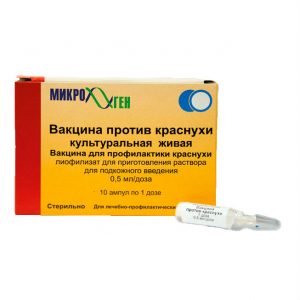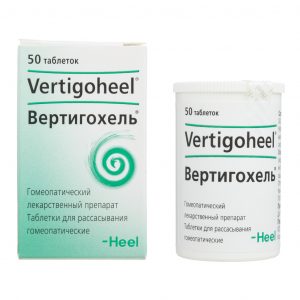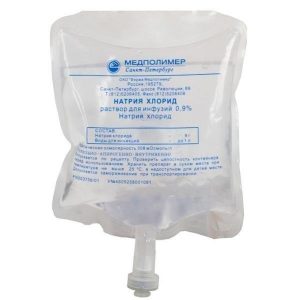Description
Release form
Solution for infusion
Packing
Bottle 100 ml.
Pharmacological action of
Aklast – an inhibitor of bone resorption, a representative of bisphosphonates. Zoledronic acid belongs to the class of aminobisphosphonates, acts mainly on bone, inhibits the activity of osteoclasts and bone resorption. The selective effect of bisphosphonates on bone tissue is based on a high affinity for mineralized bone tissue. After iv administration, zoledronic acid is rapidly redistributed to the bones and, like other bisphosphonates, is localized mainly at the sites of bone remodeling. The main molecular target of zoledronic acid in osteoclasts is the enzyme farnesyl pyrophosphate synthetase (FPS), while the possibility of other mechanisms of action of the drug is not excluded. The long period of action of Aklasts is determined by high affinity for the active center of PPS and pronounced affinity for mineralized bone tissue. On experimental models of accelerated osteoresorption shown that zoledronic acid significantly inhibits bone resorption without undesirable effects on bone formation, mineralization and mechanical properties, dose-dependently reduces the activity of osteoclasts and the frequency of activation of new remodeling foci in both trabecular and cortical (Haversian) bones, without causing the formation of fibrous bone and aberrant accumulation osteoid.
Indications
bone disease Paget’s disease
prevention and treatment of osteoporosis caused by the use of corticosteroids
prevention of postmenopausal osteoporosis (in patients with osteopenia)
postmenopausal osteoporosis (to reduce the risk of vertebral gonorrhea) fractures in men and women with fractures of the proximal femur
osteoporosis in men.
Contraindications
– severe disturbances in mineral metabolism, including hypocalcemia
– pregnancy
– lactation (breastfeeding)
– children and adolescents under 18 years of age (because the safety and efficacy of using Aklasts in this category of patients have not been studied) srdlp – Hypersensitivity to zoledronic acid, or to any other component of the drug, or to any bisphosphonates.
Aklast is not recommended for use in patients with severe impaired renal function (CC & <30 ml / min). Use during pregnancy and lactation The drug Aklast is contraindicated during pregnancy and during lactation (breastfeeding). There are no data on the use of zoledronic acid in pregnant women. Experimental studies have shown the presence of teratogenicity in one of the experimental rodent species. The potential risk when used in humans is unknown. Special instructions The physician should inform patients of the main manifestations of hypocalcemia and ensure regular monitoring of patients at risk. Aclast therapy in patients with Paget’s bone disease should only be performed by qualified doctors with experience in treating this disease. Before prescribing the drug, serum creatinine levels should be determined. In the presence of hypocalcemia, before treatment with Aklasts, adequate doses of calcium and vitamin D should be treated. Other existing mineral metabolism disorders (for example, hypoparathyroidism, decreased calcium absorption in the intestine) should be treated and regular monitoring of patients with hypocalcemia should be carried out. To reduce the incidence of adverse events observed within 3 days after administration of the drug, you can prescribe paracetamol or ibuprofen immediately after infusion of Aklast. Risk factors for developing osteonecrosis are oncological diseases, concomitant therapy (e.g. chemotherapy, radiation therapy, treatment of corticosteroids) and the presence of other concomitant diseases (e.g. anemia, coagulopathy, history of infections, dental diseases). Composition 1 vial (100 ml) contains: Active ingredient: 5 mg zoledronic acid monohydrate Excipients: mannitol sodium citrate water for injection. Dosage and administration The drug is administered as an iv infusion. Before the introduction of Aklasts, adequate hydration of the body should be ensured. This is especially important for patients over the age of 65, as well as for patients receiving diuretic therapy. For treatment, the recommended dose of Aklast is 5 mg (1 vial – 100 ml of solution) iv once a year. If calcium and vitamin D intake from the diet is insufficient, patients with osteoporosis should additionally be prescribed calcium and vitamin D. preparations Side effects Treatment of various types of osteoporosis, Paget’s bone disease and prevention of new fractures in men and women with fractures of the proximal femur. With iv administration of 5 mg of Aklast drug once a year for the treatment of postmenopausal osteoporosis in women, osteoporosis in men, for the prevention of new fractures in men and women with fractures of the proximal femur, for the prevention and treatment of osteoporosis caused by the use ofGCS and for the treatment of Paget’s bone disease, most adverse events (AEs) were mild or moderate. After iv administration of Aklast, the following AEs were most often observed in these patients: usually lasting no more than 3 days (“post-dose” symptoms) – fever (18.1%), myalgia (9.4%), flu-like syndrome (7, 8%), arthralgia (6.8%), headache (6.5%). Most of the above AEs observed within 3 days after administration of the drug were mild or moderate. With repeated administration of the drug, the severity of these AEs significantly decreased. Below are AEs, possibly associated (according to the attending physicians) with the use of the drug for the treatment of various types of osteoporosis, Paget’s bone disease and for the prevention of new fractures in men and women with fractures of the proximal femur. From the nervous system: often – headache, dizziness, sometimes – lethargy *, paresthesia, drowsiness, tremor, fainting. From the sensory organs: sometimes – conjunctivitis, pain in the eyes, rarely vertigo – uveitis *, episiscleritis, iritis. From the respiratory system: sometimes – shortness of breath *, cough. From the digestive system: often – nausea, vomiting, diarrhea sometimes – anorexia *, decreased appetite, dyspepsia *, abdominal pain *, dry mouth, esophagitis *, gastroesophageal reflux, pain in the upper abdomen, constipation. From the skin and subcutaneous tissue: sometimes – rash, hyperhidrosis *, itching, erythema. From the side of the musculoskeletal system and connective tissue: often – arthralgia *, myalgia * bone pain, back and limb pain sometimes – neck pain, swelling in the joints *, muscle cramps, pain in the shoulder girdle, chest pain * of musculoskeletal origin, muscle weakness, stiffness in muscles * and joints *, arthritis, musculoskeletal pain. From the urinary system: sometimes – an increase in blood creatinine, pollakiuria, proteinuria. From the hematopoietic system: sometimes – anemia. From the cardiovascular system: sometimes – increased blood pressure, sudden redness of the face. Infections and infestations: sometimes – flu, nasopharyngitis. On the part of the body as a whole: very often – fever often – flu-like syndrome, chills, fatigue *, asthenia, pain *, general malaise infrequently – peripheral edema, thirst *, increased irritability *, chest pain (not associated with heart disease). * Note: in some studies, the frequency of these AEs increased as follows: very often – myalgia, arthralgia, increased fatigue, pain often – lethargy, shortness of breath, dyspepsia, esophagitis, abdominal pain, hyperhidrosis, stiffness in the muscles, swelling in the joints, chest pain muscle-skeletal cells, stiffness in joints, anorexia, thirst, increased irritability infrequently – uveitis. In some studies, the following AEs were recorded, the development rate of which in the Aklast drug group was lower than in patients who did not receive the drug: redness of the eyes, increased content of C-reactive protein, hypocalcemia, taste disturbances, toothache, gastritis, sensation of severe palpitations, reactions at the injection site. When using Aklast in patients with postmenopausal osteoporosis, the overall incidence of atrial fibrillation during therapy with Aklast was 2.5% (96 out of 3862) compared with 1.9% (75 out of 3852 patients) in untreated patients drug (placebo group). In 1.3% of patients (51 patients out of 3862) who received Aklast, and in 0.6% (22 of 3852) in the placebo group this undesirable phenomenon was considered serious. The reason for the increase in the frequency of atrial fibrillation during therapy with Aklast was not established in this study. An increase in the frequency of atrial fibrillation compared with placebo noted in this study was not found in other clinical studies of zoledronic acid. Prevention of postmenopausal osteoporosis When using Aklast for the prevention of postmenopausal osteoporosis (PMO), the overall safety profile of the drug was comparable to that for PMO, except for AEs that occurred within 3 days after infusion: pain, fever, chills, myalgia, nausea headache, fatigue, arthralgia, the frequency of which was higher in women who received the drug for the prevention of PMO. Most of these AEs were mild or moderate and occurred within 3 days after manifestation. With repeated administration of the drug, the severity of these AEs significantly decreased. The following are AEs, possibly related to the use of the drug for the prevention of PMO (according to the attending physicians): 1) AE, noted more than 1 time with the introduction of the drug Aklast for the prevention of PMO and not registered when using the drug for the treatment of various types of osteoporosis, Paget’s bone disease and for the prevention of new fractures in men and women with fractures of the proximal femur 2) AE, the frequency of which was higher in women who received the drug for the prevention of PMO (compared with other categories of patients). Mental disorders: sometimes anxiety. From the nervous system: very often – headache often – tremor, lethargy infrequently – decreased sensitivity, taste disturbances. From the side of the organ of vision: often – conjunctivitis, pain in the eyes, iritis infrequently – blurred vision. From the digestive system: very often – nausea often – anorexia, abdominal pain, pain in the upper abdomen, constipation. From the skin and subcutaneous tissue: often – increased sweating at night. From the side of the musculoskeletal system and connective tissue: very often – myalgia often – musculoskeletal pain, muscle spasm, pain in the chest area of musculoskeletal origin, pain in the jaw area, pain in the neck area infrequently – side pain. On the part of the body as a whole and reactions at the injection site: very often – pain, chills often – peripheral edema, reactions at the injection site, non-cardiac pain in the chest area. Changes in laboratory test results In patients with postmenopausal osteoporosis with the use of the drug Aklast in 0.2% of cases, there was a decrease in the concentration of calcium (less than 1.87 mmol / l) in the blood serum no clinical signs of hypocalcemia were observed. When using the drug in patients with fractures of the femur, with osteoporosis in men and osteoporosis caused by taking corticosteroids, there was no decrease in plasma calcium concentration of less than 1.87 mmol / L. When using the drug in patients for the prevention of postmenopausal osteoporosis, there was no decrease in plasma calcium concentration of less than 1.87 mmol / L. In patients with Paget’s disease in approximately 1% of cases transient hypocalcemia was detected, accompanied by clinical manifestations. Impaired renal function. With the on / in the introduction of bisphosphonates, including zoledronic acid, there have been cases of impaired renal function, manifested by an increase in blood creatinine concentration and in rare cases, acute renal failure. Renal dysfunction with the use of zoledronic acid was observed in patients with a history of renal pathology or additional risk factors (for example, oncological diseases requiring chemotherapy, the use of nephrotoxic drugs, diuretics, or severe dehydration). Most of these patients received therapy with zoledronic acid at a dose of 4 mg every 3-4 weeks, however, in some cases, renal dysfunction was noted after a single use of zoledronic acid. During therapy with Aklast for 3 years in patients with postmenopausal osteoporosis, the frequency of increased creatinine in plasma and the development of renal failure did not differ from that with placebo. In patients treated with Aklast, somewhat more often, a transient increase in blood creatinine concentration was observed within 10 days after infusion compared with placebo (1.8 and 0.8%, respectively). When using Aklast for 2 years in men with osteoporosis, the frequency of changes in creatinine clearance and the development of impaired renal function was similar to that in the alendronic acid group. In patients with osteoporosis caused by the use of corticosteroids, during therapy with Aklast, the frequency of changes in creatinine clearance and the development of impaired renal function was similar to that in the risedronic acid group. Reactions at the injection site. When using the drug Aklast in patients with postmenopausal osteoporosis in 0.7% of cases, redness, swelling and / or soreness at the injection site were noted. In patients with femoral fractures, the frequency of reactions at the injection site was comparable to that in the placebo group. In the treatment of osteoporosis in men, the frequency of reactions at the injection site of Aklast was 2.6% (compared with 1.4% in the alendronic acid group). In patients with osteoporosis caused by the use of corticosteroids, there were no reactions at the injection site. When using the drug for the prevention of postmenopausal osteoporosis, the frequency of reactions at the injection site of Aklast was 1.1% (compared with 2.0% in the placebo group). Osteonecrosis of the jaw. Cases of development of osteonecrosis (most often the jaw) occurred mainly in cancer patients receiving treatment with bisphosphonates after tooth extraction or other dental procedures. Most patients had symptoms of a local infectious and inflammatory process, including osteomyelitis. In clinical trials in patients with osteoporosis, a case of osteonecrosis of the jaw occurred in 1 patient taking Aklast and 2 patients taking placebo. In all three cases, resolution of the process was noted. With the use of the drug Aklast in patients with fractures of the femur, with osteoporosis in men and osteoporosis caused by taking corticosteroids, as well as with the use of the drug for the prevention of postmenopausal osteoporosis, there were no cases of development of jaw osteonecrosis. Selected reports of adverse events The following AEs have been observed in clinical practice with Aklast drug therapy without indicating a causal relationship with the use of the drug (the frequency of AE has not been established): hypersensitivity reactions, including in rare cases, bronchial obstruction, urticaria, angioedema and individual reports of the development of anaphylactic reactions, including anaphylactic shock. In rare cases, when using the drug Aklast in clinical practice, patients have impaired renal function, including renal failure, requiring hemodialysis, especially in patients with a history of renal disease or additional risk factors (for example, with concomitant therapy with nephrotoxic drugs, diuretics or with severe dehydration). In very rare cases, the development of the following AEs has been reported: dehydration due to fever, vomiting and diarrhea occurring after administration of the drug, a marked decrease in blood pressure in patients with risk factors, jaw osteonecrosis, scleritis and inflammation in the orbit. overdose There is currently limited clinical data on overdose cases. Patients receiving the drug in excess of the recommended dose should be monitored by a doctor. Symptoms: with acute overdose of zoledronic acid (limited data), renal impairment was noted, including renal failure, hypocalcemia, hypophosphatemia, hypomagnesemia. Treatment: in the case of overdose of the drug, accompanied by clinical symptoms (numbness, tingling sensation, especially in the mouth, muscle spasms), shown in / in the introduction of solutions containing calcium ions, magnesium and phosphates. If it is impossible to / in the introduction of calcium preparations, their oral administration is possible. Storage conditions Keep out of the reach and sight of children at temperatures not exceeding 25 ° C. After opening the vial, the solution is stable at 2 ° -8 ° C for 24 hours Shelf life 3 years. Terms and conditions prescription dosage form infusion solution Prescription Prescription For adults as prescribed by a doctor




